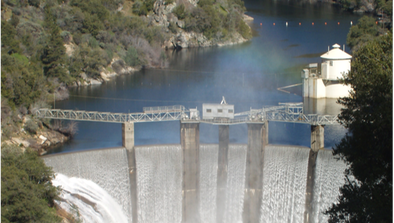Overview
|
|
Does cloud seeding really work?
RHS has vast experience in cloud seeding and has seen how beneficial cloud seeding can be when increasing precipitation in a project target area. Cloud Seeding is used when natural cloud systems cannot produce precipitation efficiently. Vitally important for increasing precipitation is being able to correctly forecast and identify developing clouds and storm systems that have a high potential for producing additional precipitation either by the "static" or the "dynamic" cloud seeding concepts. Cloud seeding programs can use ground generators, aircraft or use a combination of both. What methods and materials are used depend on the area and are adapted to the specific project location and the weather patterns for the location.
|
How does cloud seeding work?
Many winter clouds do not contain a sufficient number of natural ice nuclei to produce precipitation efficiently, particularly in the warmer temperatures that supercooled liquid forms. Static cloud seeding methods introduce additional ice nuclei into clouds to increase the efficiency of the natural precipitation process. New seeded ice crystals grow faster and fallout faster at the expense of competing loud droplets. When ice nucleating agents are released upwind at warmer temperatures on the windward side of a mountain barrier from aircraft they cause the ice process to initiate sooner so that new seeded precipitation to falls out earlier on the windward side of a barrier. The end result is additional precipitation and an increases in runoff in the target area.
Dynamic seeding involves the release of larger amounts of seeding agents to promote the release of latent heat and increase the buoyancy and volume of a cloud. This type of seeding is usually conducted in convective clouds with higher liquid water contents. In the Sierra these seeding methods are used in late spring and summer events.
Many winter clouds do not contain a sufficient number of natural ice nuclei to produce precipitation efficiently, particularly in the warmer temperatures that supercooled liquid forms. Static cloud seeding methods introduce additional ice nuclei into clouds to increase the efficiency of the natural precipitation process. New seeded ice crystals grow faster and fallout faster at the expense of competing loud droplets. When ice nucleating agents are released upwind at warmer temperatures on the windward side of a mountain barrier from aircraft they cause the ice process to initiate sooner so that new seeded precipitation to falls out earlier on the windward side of a barrier. The end result is additional precipitation and an increases in runoff in the target area.
Dynamic seeding involves the release of larger amounts of seeding agents to promote the release of latent heat and increase the buoyancy and volume of a cloud. This type of seeding is usually conducted in convective clouds with higher liquid water contents. In the Sierra these seeding methods are used in late spring and summer events.
A hygroscopic cloud seeding concept is used when clouds contain an overabundance of CCN, cloud condensation nuclei. With to many CCN cloud drop size distributions may not have a sufficient number of large water droplets to initiate the precipitation process. In this situation, hygroscopic cloud seeding enhances the growth rate of large droplets by using complex combinations of hygroscopic salts to stimulate the precipitation process and restore the system to its natural efficiency. Base seeding or just above cloud base is the preferred delivery method used in hygroscopic seeding.
In the Southern Sierra RHS Consulting combines these methods when seeding late spring convective storms with warm cloud bases. Simultaneous releases of both glaciogenic and hygroscopic seeding aerosols are conducted at cloud base. These storms often develop in monsoonal flows originating from the south that entrain high concentration of CCN. Combination seeding these storms promotes large droplet growth that subsequently freeze and splinter releasing additional latent heat that increases cloud volume and more precipitation.
In the Southern Sierra RHS Consulting combines these methods when seeding late spring convective storms with warm cloud bases. Simultaneous releases of both glaciogenic and hygroscopic seeding aerosols are conducted at cloud base. These storms often develop in monsoonal flows originating from the south that entrain high concentration of CCN. Combination seeding these storms promotes large droplet growth that subsequently freeze and splinter releasing additional latent heat that increases cloud volume and more precipitation.

